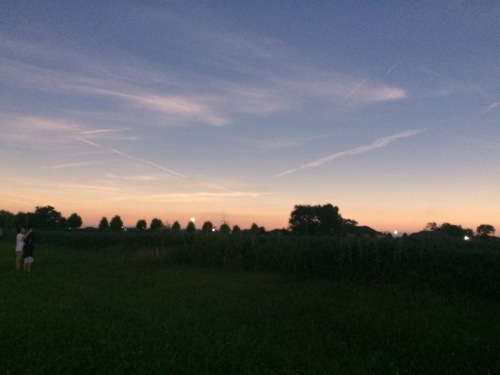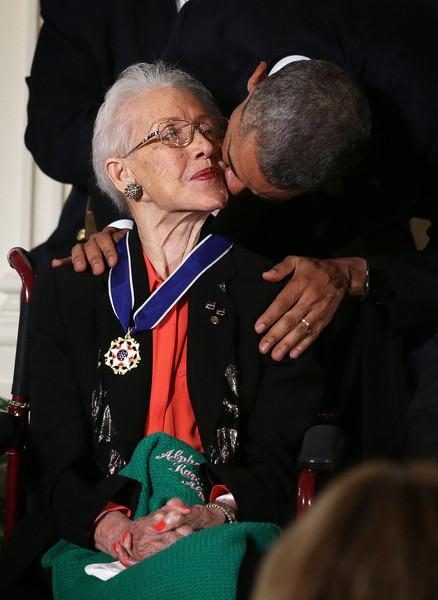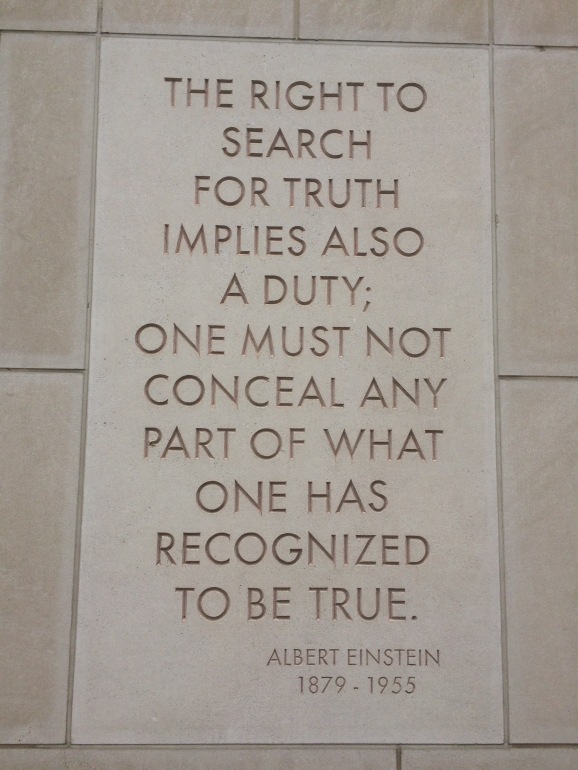Curiously, the concert that I left work to attend last night was something I discovered almost exactly one week earlier (even to the same clock time). The group I went to see was Black Violin, two classically trained violinists who are a) black, from Ft. Lauderdale; b) insistent on thinking outside of the box; and c) have a strong alternative vision of how the world can be different than it is, beyond existing stereotypes or interpretations. (Yes, the highlighted words and links are in fact the names of their albums. Go listen.) Last Friday, I was on the train to spend the New Year’s holiday in my hometown of Philadelphia with friends. I had put on the music just for some simple enjoyment, and found myself transformed and emotionally intense and resonant. (Yes, it’s also when I found out about their concern in Washington, DC last night.)

Black Violin, with the National Symphony Orchestra, Feb 6, 2017
One of my favorite descriptions of my approach to the world was provided by a GROUPER a couple of years ago, during a 1:1 meeting at a conference. (I can still see the design of the French patisserie / café in my memory.) The description was that I live part of my existence in the future, but the nice part is that I “send postcards”. This is a delightful image, but it hides a painful and problematic truth: not everyone can receive “postcards from the future,” or even know that they exist. I used to think this was a simple problem of better explanation, but I have had to come to the recognition that there is more at play. An alternative metaphor comes from my son, who once made a surprised and surprising revelation once when watching me dance to a piece of music to which I resonated very strongly. He admitted that he had thought that I simply didn’t have a very good sense of rhythm. Then, as he got older and started thinking more seriously about music composition and production as a career, he listened to more music, more often, at a deeper level. His statement at a friend’s house was with a type of confused awe: “You’re trying to dance to all of the notes, not just the normal beat.”
One of my favorite and most inspirational books of my life is called Cyteen, for a number of reasons (including some too complex to go into here). I am particularly taken by one of the descriptions of a major protagonist’s sense of their life’s work… that, if they are devoted and dedicated to their passion and their gifts and their uniqueness, because of and not simply despite their unique or alternative make-up, they may have the opportunity to someday speak their “Word,” their major contribution to history’s arc. While Speaking Words to History sounds pretty cool (at least for my sense of doing what I was built to do), it comes at a major, even profound cost. I am drawn most to the myth of Cassandra, who was cursed for defying the god Apollo (isn’t that usually how things like that turn out?) by being able to see and foretell the future, but being unable to alter it, and being doomed to have others not believe her when she told them. (I have to hand it to Apollo, though: that’s a pretty exquisite form of sadistic torture. But really, just because she turned you down for a date? I mean, you’re a god and all…)

Poor Cassandra. (From Wikipedia page, public domain image: Cassandra (metaphor)
It’s really hard to explain to GROUPERs the process of finding and sending postcards from the future, and more importantly, I don’t think it’s a proper thing for me to insist that they do so. For nearly all of the students I’ve met, it’s not the right lesson to be teaching, and there are certainly a wide range of valid and important jobs that one can take on without invoking divine curses. Having someone who can simply receive the postcard, and translate part of it, is worth a lot. For example, our current experiences of politics, local and national security, and even the nature of honest communication is based on elements of situational context, information cues, and media characteristics of different information and communication technology channels. We’re asking about tolerance and acceptance of new communications media in various organizations. That sounds like a really great research project, especially when combining new forms of social messaging as various types of an advanced, or evolved, model of email (written electronic communication), or other group interactions (with or without audio and video capabilities). It might still be considered a bit ahead of the curve, or timely, because we’re in the midst of it now. But consider a study of organizational acceptance of alternative media channels conducted in 1992, fully 25 years ago. That’s before there were any iPhones, or web browsers, or T1 lines (or many of my students). No graphical email or tweets with emojis. Do the questions even make sense? For most people, not really. (At least that’s the memory of reviewer comments for the Taha and Caldwell, 1992 submission to the Human Factors Society conference.)
Back to the train last Friday. Imagine me trying to dance to all of the notes as the train pulls into (and then out of) Philadelphia as I continue my journey. The lights of Philadelphia’s Boathouse row are still holiday festive. I am crying my resonance to the music playing in my ears. I finally feel like a type of homecoming has occurred, one that I had sought in vain for nearly 40 years. In the midst of this, an insight. Normally, I wouldn’t tell anyone, or I’d write it up piecewise in journal papers. Not this time. I’m going to show you the postcard here.
View #1: The Spectrogram
A few years ago, Jeremi London (not the actor) and I worked on a model of STEM education based on the concept that what we in fact try to teach engineers in order to be functional, productive engineers is not a single thing, but a large matrix of skills, habits, attributes, and techniques. Different courses supposedly load on different matrix elements, and different students have different strengths and weaknesses in those elements. I visualize this as a type of dynamic matrix of peaks and valleys, as you might get in a audio spectrogram. What we might think of as intelligence or skill or functionality is actually an aggregation of those peaks and valleys across that range of matrix elements: a person’s functionality is, generally, how well their peaks map onto the things they need to do on a daily basis. Zero functioning is actually hard to imagine, and if most of the population was in fact functioning at zero, we might not even see it as a relevant matrix attribute element to consider. (If someone had a peak there, would we even think about it as a peak? Consider the question of tetrachromats.) For the sake of analysis and comparison, it’s important to both retain the spectrogram as a matrix, and also consider a simplified representation of it. You could call it IQ or something. Let’s just describe it as the determinant of the functionality matrix.
View #2: The Bowl
Some of you know that I have a deep, longstanding, and personal interest in questions of neurodiversity: creating models of acceptance, encouragement, and tolerance for people with different sets of skills and forms of excellence. (This isn’t just a “feel good” about diversity and tolerance as a moral issue. This is about benefitting from excellence where it is found, including functionality peaks due to alternative wiring that represent “signs of life” not common in the general population. Well, if you’re training PhD students, that’s not a bad thing to look for: higher, and more distinct, functionality peaks than exist in the general population. After all, not that many folks get PhDs.)
So, the more your spectrogram pattern of peaks and valleys differs from the standard version (not just higher peaks, but peaks in different places), the less “standard” you are. (Standard, in this case, represents not just the population norm of the matrix determinants, but the modal matrix pattern.) In an extreme case, someone with a whole lot of peaks in places where standard people are close to zero, and very low functioning where standard people have peaks, would find it exceptionally hard or impossible to communicate with standard folks at all. (The concept of “communication” here might work as a multi-dimensional convolution integral, or a multiplication of functions against each other. You don’t worry about that just now, unless you really want to.) The more non-standard a person is, the further their pattern is from the standard pattern, and the more overall capability and functionality it might take to compensate for the mismatch, and be seen as equivalently functional as the modal, standard person. If we considered a function where the matrix determinant was the height, and the difference in pattern was a radius (different types of different patterns would be angles, so we’re in polar coordinates), the “bowl” would be a surface of “equivalent perceived functionality,” with an edge being at a place where someone, no matter how many peaks they had or how profoundly high those peaks are, could not interact with standard folks well enough to be seen as functional. (So, you can’t see in our standard visual spectrum? Well, we think you’re blind, even if you have a great visual experience of radio waves. Too bad if you can hear and sing the vibrations of the planet. We work in 200 – 4000 Hz, thank you, and if you can’t hear or produce in that range, we won’t hear what each other is saying. Literally.)
View #3: The Disk
Another of the elements we have been playing with in the lab gets the shorthand description of “The Six Dimensions of expertise,” with a corollary of “the disk”. As we described the matrix above, there are lots of different ways we could organize the elements of the matrix of ways people are good at different things. They may be socially skilled and charismatic; they may be great with tools and interfaces; they may enjoy structured rules and processes; they may enjoy mathematical analysis and quantitative exploration. There are other ways to slice skills up into different collections, but there’s been a lot of work recently into “four-quadrant” cognitive styles inventories that are used in organizational assessment. For the purposes of this discussion, all this tells us is where in the spectrogram the matrix elements of your peaks and valleys are likely to be found. Useful, if we want to do systematic comparisons of different patterns of functioning (and convolutions of functionality for communication or information alignment). Which is the “right” four-quadrant model? That’s not a proper question; it’s kind of like asking what is the “right” set of compass directions. We agree on one for the purposes of discussion, even though there isn’t even alignment between magnetic and geographic compass directions, and it’s even possible that we could have a situation where magnetic south points towards geographic north.
View #4 = Function (#1:#3)
What I’ve described for each of the views above is far from a standard description of how we consider psychological concepts of intelligence, personality, functionality, or cognitive diversity. Lots of researchers toil very intensely in intelligence assessment or engineering aptitude evaluations, or the genetic contributions to Asperger’s syndrome, or refinements of MMPI or Myers-Briggs inventories (to use examples of standard questions in each of the three views). Mathematically, however, what I have laid out can be combined (although it’s extremely hard to draw the picture in three dimensions). Imagine the spectrogram matrix (#1) of a “standard average person” (both in terms of normative / neurotypical wiring rather than autistic spectrum, and in terms of average intelligence), where the matrix is organized according to a four-quadrant disc model where different capabilities are ordered within quadrants with respect to their relative frequency and strength in the population. Take the determinant of that matrix (note that this result should be independent of how you order the matrix elements). We’ll now define that “value” of the bottom of the bowl as “standard normative functioning in the modal pattern”.
Whose Project is This?
Is this what the lab is currently working on? My goodness, no. I would NEVER assign this, in totality, as a project for a student thesis. It requires significant revisions of three or four major disciplines, as well as some advanced mathematics for the methodologies, and new forms of data collection on thousands or millions of persons on a set of variables we don’t even define well, let alone currently measure or collect. But, for the first time, I have been willing to describe a panoramic postcard of this type in a public venue. Why? For years, I was worried that lots of other people would understand, and jump on the problems, and start working on them, and that my best contributions would be left behind, meaningless and trivial. Then I started to think that this would be considered foolish and ridiculous, unless and until I took on myself the responsibility of being able to explain it better so that “most people” could get it. But, Words Spoken to History are not widely understood, even for years or decades, and the measure of the mark on the tree of knowledge is not how many people applaud when the mark is made. Galileo learned this lesson, as did Leonardo DaVinci, and Marie Curie, and Rachel Carson (and Ariane Emory). Am I comparing myself to them? No, not even close. I’m just trying to Speak my Words.
Thank you, C. J. Cherryh, for the concept of sets, and A-E, for the introduction.























October 23, 2017
Expanding the Territory
Now that I have returned to Purdue, I am back to experiencing some of my past habits and activities as a faculty member. In my previous entry, “Crossing Paths,” I mentioned my trip to North Dakota for the Space Grant meeting; last week, the travel was to Austin, Texas for the Human Factors and Ergonomics Society (HFES) meeting. After being in Washington for a full year, it was both refreshing and curiously strange to be back at an academic conference. More than anything else, I was able to enjoy re-connecting with colleagues and collaborators and others in a community that I have been an active part for over 25 years, rather than the valuable (but disconcerting) experience of learning a new environment and new norms in an unfamiliar context.
A year away from something so immersive as one’s primary research community does permit a new experience and view upon one’s return. It is not just that my presentations took on a slightly different tone due to the experience of writing for diplomats; I was thinking about the presentations differently, colored by my growing understanding of what it is to speak on policy topics. I was very glad to see GROUPER alumnae and hear of their successes; I enjoyed watching the current students present well and receive appreciative comments from the audience. That was much more satisfying in many ways than actually being the one presenting all of the papers. It’s an interesting expansion of perception and shift in perspective on the territory (dare I say legacy?) of one’s career. Interestingly, I could also hear it differently this time, aided by the alternative experience of last year. Where has the influence gone, and how has it traveled from its headwaters? Does the river notice its impact on the stones as it flows?
I recognize that some of what I missed while in Washington was the regular opportunity to work with and mentor people whose personal and professional trajectories could be increased. What I could begin to notice in Austin was how much influence my past efforts have had on others, even when I didn’t realize previously that what I was doing would affect them in a lasting way. In retrospect, it’s not surprising, but at the time, I found myself at a loss for words when I was introduced to a promising student by someone who had already been positively influenced by their interactions with me. I wasn’t actively recruiting new students… but I would be pleased to have such exciting and passionate people to help explore new projects and possibilities.
Another area of recognition during the past two months since I returned from Washington was the change in context to describe the applications of our work in the lab. Yes, it’s easy to excite other space folks about the NASA research on Mars exploration analog projects; pilots often don’t need to be convinced about the value of our aviation weather information studies. But policy impacts? Can’t we just leave that to others? As I have learned, the answer is “no”. The connections won’t be evident to all, as we’ve already learned from the story of Cassandra and “postcards”. What is the broader context of connections, within and beyond the communities that already sense the value of what we do?
Perhaps I shouldn’t be surprised about this, but nonetheless, it has taken me a while to process this change in thinking due to my experience in Washington. My conversations while in Austin did not just cover the next steps for the HFES, but next steps for national science and technology policy. The research discussions were not just posed in the context of a single principal investigator grant to a directed funding agency call… but possibilities to address broader elements of engineering’s role in society. What justification would you provide to say that your research was worth funding to people who weren’t specialists in your area, or even in STEM research in general? (Oh. This is exactly what is being proposed in the U.S. Senate.)
I happen to like GROUPER’s statement of why we exist… however, I’m biased, and I already know what it means to talk about “human processes of information flow, knowledge sharing, and task coordination”. But what is that good for? A very similar question was asked by, and of, the National Academy of Engineering (now renamed as part of the National Academies of Science, Engineering and Medicine, or NASEM) to explain the role of engineering research and technology development to address 14 “global Grand Challenges” facing society in the 21st Century. Speakers at the Global Grand Challenges Summit (GGCS) in Washington in July asked members of the audience to think about how their work might address any of the Grand Challenges: in essence, a call to consider expanding one’s territory of impact. And when I brought that question to the lab, an interesting insight emerged.
GROUPER research addresses seven of the 14 Grand Challenges.
Five of these are pretty obvious: PERCH research on brain injury recovery and personalized medicine for chronic care directly touches on “Personalized Learning,” “Reverse-Engineer the Brain,” and “Advance Health Informatics”. CORAL and SHARK work on secure supply chains and network operations center teams hits on “Secure Cyberspace”. These projects, together with our STINGRAY work on spaceflight operations, provide examples of “Engineer the Tools of Scientific Discovery,” particularly discovery conducted by interdisciplinary teams of humans. In addition, there are two more areas that benefit by GROUPER’s ability to capitalize on connections. It’s not just the individualized brain trajectories and chronic care models, but the discussion of Systems Engineering to support improved information architectures for non-text references, that helps address the push to “Engineer Better Medicines.” Improved information architectures, improved network operations and event responses, and better cognitive framing for addressing uncertainty in event prediction and response all assist in the effort to “Restore and Improve Urban Infrastructure”.
That’s a very big territory. There’s more to do, not less. Who else wants to go explore and map such beautiful frontiers?
Share this: